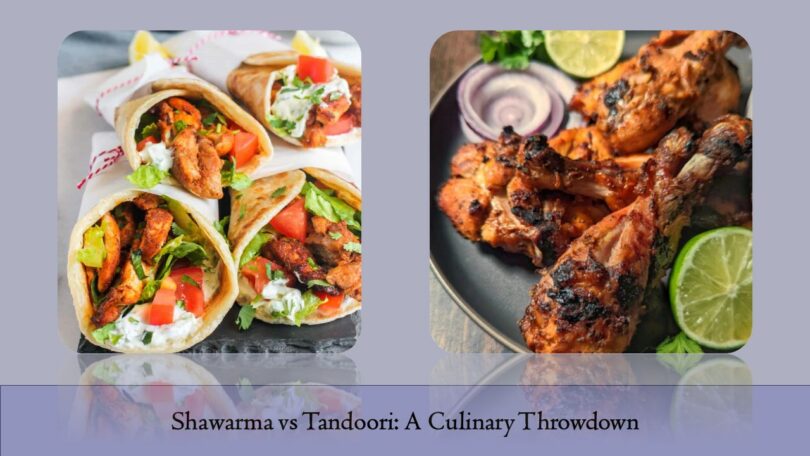When it comes to tantalizing and flavorful dishes, Shawarma and Tandoori are two of the most popular and beloved meals worldwide. Despite their disparate origins – Shawarma from the Middle East and Tandoori from the Indian subcontinent – these two have become iconic dishes, relished by food connoisseurs globally. But how do these two stand against each other? Let’s embark on a culinary journey to explore the similarities and differences between Shawarma and Tandoori.
The World of Shawarma
Shawarma, a marquee dish of Middle Eastern cuisine, is a sumptuous meat delicacy traditionally prepared by grilling marinated slices of beef, chicken, or lamb on a vertical rotisserie. As the spit rotates, the outer layer of the meat cooks to perfection, after which it is shaved off and served, typically in a warm pita bread with a medley of fresh vegetables, tahini, hummus, or garlic yogurt sauce.
Flavors of Shawarma
Shawarma is all about the balance of flavors. The meat is marinated with a concoction of spices, including turmeric, cumin, allspice, cinnamon, and cardamom, which infuse it with a unique taste and aroma. The slow grilling process allows these flavors to meld together, resulting in succulent and savory slices that burst with flavor in every bite.
Entering the Tandoori Realm
Tandoori, on the other hand, is a style of cooking that has become synonymous with Indian cuisine. Named after the tandoor, a clay oven used for cooking and baking, Tandoori dishes often involve marinating meat in a mixture of yogurt and a blend of spices known as ‘Tandoori Masala’, and then grilling it in the high-heat environment of the tandoor.
Tandoori’s Taste Spectrum
The robust flavor profile of Tandoori dishes is derived from the combination of spices such as cumin, coriander, turmeric, and the smoky flavor imparted by the tandoor. Whether it’s Tandoori chicken, lamb, or fish, the result is a smoky, juicy, and deeply flavorful dish with a slightly charred exterior and a soft, tender inside. The vibrant red hue, a characteristic trait of Tandoori dishes, adds an enticing visual appeal to the palate.
Shawarma vs Tandoori: The Face-off
While both Shawarma and Tandoori involve marinating and grilling meats to create flavorsome dishes, they vary significantly in their taste profiles, preparation methods, and serving styles. Shawarma’s appeal lies in its tender, juicy meat, subtly spiced and served in a wrap or pita bread, offering a complete meal in one package. The additional elements like pickles, fries, and sauces heighten its flavor, making it a popular street food option.
On the flip side, Tandoori is all about the depth of flavors achieved from the blend of spices and the smoky aroma from the tandoor oven. It is typically served as part of a larger meal, accompanied by naan bread or rice, and side dishes like dal (lentil soup) or a yogurt-based raita.
Conclusion: Shawarma vs Tandoori
In the culinary throwdown between Shawarma and Tandoori, it’s tough to declare a definitive winner. Both offer a unique and unforgettable gastronomic experience, satisfying different aspects of the palate. If you’re a fan of Middle Eastern flavors, Shawarma could be your go-to choice. If, however, you’re inclined towards the intense, smoky flavors typical of Indian cuisine, Tandoori will be a hit.
Ultimately,the winner comes down to individual preference and mood. The real joy of exploring these dishes lies in their diversity and the culinary traditions they represent. So why limit yourself? Embrace the opportunity to enjoy both Shawarma and Tandoori, and broaden your food horizons. From the street corners of the Middle East to the bustling food markets of India, let these dishes transport you to a whole new world of flavors. Whether you’re a Shawarma lover or a Tandoori enthusiast, one thing is certain: there’s a delicious journey of discovery waiting for you. Bon Appétit!




Leave a Comment